 W
WThe 64-gun ship of the line was a type of two-decker warship defined during the 18th century, named after the number of their guns. 64-guns had a lower battery of 24-pounders, and an upper battery of 12-pounders. Heavier variants with 18-pounder on the upper deck also existed.
 W
WThe Ajax-class ships of the line were a class of two 74-gun third rates of the Royal Navy. They were grouped in with the large class of 74s, as they carried 24-pounders on their upper gun decks, rather than the 18-pounders of the middling and common class 74s. The design of the Ajax class was a lengthened version of the Valiant class, the lines of which were taken from the French Invincible, captured in 1747.
 W
WThe Albion-class ships of the line were a class of five 74-gun third rates, designed for the Royal Navy by Sir Thomas Slade.
 W
WThe Albion-class ships of the line were a class of two-deck 90-gun second rates, designed for the Royal Navy by Sir William Symonds. The first two were originally ordered in March 1840 as 80-gun ships of the Vanguard class, but were re-ordered to a new design of 90 guns some three months later. Three more ships to this design were ordered in March 1840, but two of these were re-ordered to fresh designs in 1847.
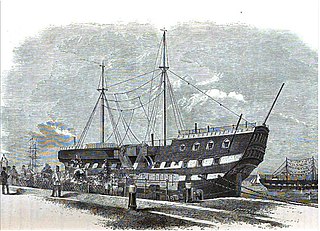 W
WThe Alfred-class ships of the line were a class of four 74-gun third rates for the Royal Navy by Sir John Williams. They were an enlarged version of the Royal Oak class.
 W
WThe America-class ships of the line were a class of two 74-gun third rates. They were built for the Royal Navy to the lines of the French Téméraire-class ship America, which had been captured in 1794 and renamed HMS Impetueux.
 W
WThe Ardent-class ships of the line were a class of seven 64-gun third rates, designed for the Royal Navy by Sir Thomas Slade.
 W
WThe Arrogant-class ships of the line were a class of twelve 74-gun third rate ships designed by Sir Thomas Slade for the Royal Navy.
 W
WThe Barfleur-class ships of the line were a class of four 90-gun second rates, designed for the Royal Navy by Sir Thomas Slade.
 W
WThe Bellona-class ships of the line were a class of five 74-gun third rates, whose design for the Royal Navy by Sir Thomas Slade was approved on 31 January 1758. Three ships were ordered on 28 December 1757, with names being assigned on 1 February 1758. Two further ships to this design were ordered on 13 December 1758, at the same time as two ships of a revised design – the Arrogant class.
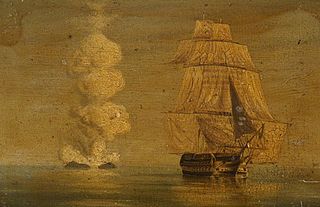 W
WThe Black Prince-class ships of the line were a class of four 74-gun third rates built for the Royal Navy in the closing years of the Napoleonic War. The draught for this class of ship was essentially a reduced version of the captured Danish ship Christian VII.
 W
WThe Boyne-class ships of the line were a class of two 98-gun second rates, ordered in 1783 and designed for the Royal Navy by Sir Edward Hunt.
 W
WThe Boyne-class ships of the line of 1810 were a class of two 98-gun second rates, built to the draught of HMS Victory.
 W
WThe Bulwark class were the final class of wooden line-of-battle ships laid down for the Royal Navy. They were laid down after HMS Warrior. In March 1861 their construction was suspended, and seven were later converted to iron-clads. HMS Bulwark and HMS Robust were kept on the stocks almost complete, in case of need, until they were scrapped in 1873 and 1872.
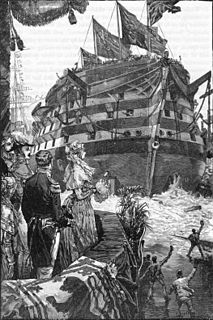 W
WThe Caledonia-class ships of the line were a class of nine 120-gun first rates, designed for the Royal Navy by Sir William Rule. A tenth ship was ordered on 29 October 1827 to the same design, but was launched in 1833 as Queen to a fresh design by Sir William Symonds.
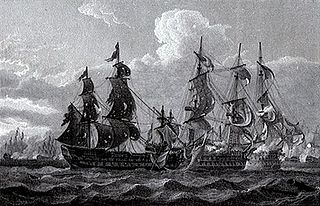 W
WThe Canada class ships of the line were a series of four 74-gun third rates designed for the Royal Navy by William Bateley. The name ship of the class was launched in 1765.
 W
WThe Canopus-class ships of the line were a class of nine 84-gun two-deck second rates of the Royal Navy. Their design was based on an enlarged version of the lines of the captured French ship Franklin, since commissioned in the Royal Navy as HMS Canopus, although this ship herself was not included as a member of the class. The earlier ships were initially ordered as 80-gun third rates, but this classification was altered by changes in the rating system in February 1817. This class of ships is sometimes referred to as the Formidable class.
 W
WThe Conqueror-class ships of the line were a class of two 101-gun first rate screw propelled ships designed by the Surveyor’s Department for the Royal Navy.
 W
WThe Courageux-class ships of the line were a class of six 74-gun third rates of the Royal Navy. Their design was a direct copy of the French ship Courageux, captured in 1761 by HMS Bellona. This class of ship is sometimes referred to as the Leviathan class. A further two ships of the class were built to a slightly lengthened version of the Courageux draught. A final two ships were ordered to a third modification of the draught.
 W
WThe Culloden-class ships of the line were a class of eight 74-gun third rates, designed for the Royal Navy by Sir Thomas Slade. The Cullodens were the last class of 74s which Slade designed before his death in 1771.
 W
WThe Dublin-class ships of the line were a class of seven 74-gun third rates, designed for the Royal Navy by Sir Thomas Slade.
 W
WThe Duke-class ships of the line were a class of four 98-gun second rates, designed for the Royal Navy by Sir John Williams.
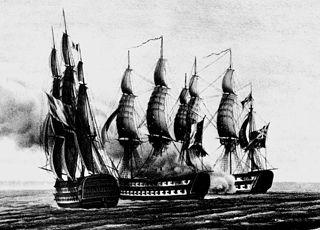 W
WThe Elizabeth-class ships of the line were a class of eight 74-gun third rates, designed for the Royal Navy by Sir Thomas Slade.
 W
WThe Exeter-class ships of the line were a class of four 64-gun third rates, designed for the Royal Navy by William Bateley.
 W
WThe Fame-class ships of the line were a class of four 74-gun third rates, designed for the Royal Navy by Sir John Henslow. After the name-ship of the class was ordered in October 1799, the design was slightly altered before the next three ships were ordered in February 1800. A second batch of five ships was ordered in 1805 to a slightly further modified version of the original draught.
 W
WThe Ganges-class ships of the line were a class of six 74-gun third rates, designed for the Royal Navy by Sir Edward Hunt.
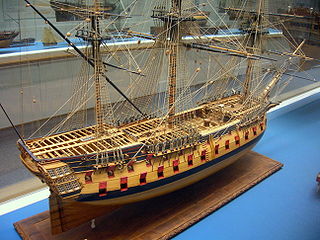 W
WThe Hercules class ships of the line were a class of two 74-gun third rates, designed for the Royal Navy by Sir Thomas Slade.
 W
WThe Intrepid-class ships of the line were a class of fifteen 64-gun third rates, designed for the Royal Navy by Sir John Williams. His design, approved on 18 December 1765, was slightly smaller than Sir Thomas Slade's contemporary Worcester class design of the same year, against which it was evaluated competitively. Following the prototype, four more ships were ordered in 1767–69, and a further ten between 1771 and 1779.
 W
WThe London class ships of the line were a class of four second rates, designed for the Royal Navy by Sir Thomas Slade.
 W
WThe Nelson-class ships of the line were a class of three 120-gun first rates, designed for the Royal Navy as a joint effort between the two Surveyors of the Navy at the time.
 W
WThe Neptune-class ships of the line were a class of three 98-gun second rates, designed for the Royal Navy by Sir John Henslow. All three of the ships in the class took part in the Battle of Trafalgar in 1805.
 W
WThe Pompée-class ships of the line were a class of two 74-gun third rates. They were built for the Royal Navy to the lines of the French ship Pompée, a Téméraire-class ship of the line which had been captured by Britain in 1793.
 W
WThe Princess Charlotte-class ships of the line were a class of two 104-gun first rates of the Royal Navy. They were built to an enlarged version of the lines of Sir Thomas Slade's Victory.
 W
WThe Ramillies-class ships of the line were a class of nine 74-gun third rates, designed for the Royal Navy by Sir Thomas Slade.
 W
WThe Repulse-class ships of the line were a class of eleven 74-gun third rates, designed for the Royal Navy by Sir William Rule. The first three ships to this design were ordered in 1800, with a second batch of five following in 1805. The final three ships of the class were ordered towards the end of the Napoleonic War to a modified version of Rule's draught, using the new constructional system created by Sir Robert Seppings; all three were completed after the war's end.
 W
WThe Rodney-class ships of the line were a class of 3 two-deck 90-gun second rates, designed for the Royal Navy by Sir Robert Seppings.
 W
WThe Royal Oak-class ships of the line were a class of six 74-gun third rates, designed for the Royal Navy by Sir John Williams. The Alfred class were an enlarged version of the Royal Oak class.
 W
WThe Sandwich class ships of the line were a class of three 90-gun second rates, designed for the Royal Navy by Sir Thomas Slade.
 W
WThe Sultan Makhmud class was a group of eight 84-gun ships of the line built for the Black Sea Fleet of the Imperial Russian Navy. The class comprised Sultan Makhmud, Trekh Ierarkhov, Arkhangel Gavriil, Selafail, Uriil, Varna, Iagudiil, and Sviatoslav. They were built as part of a naval expansion program directed against the British and French, which Russia viewed as competitors to fill the power vacuum left by the continued decline of the Ottoman Empire. The ships represented an improvement over the traditional seventy-four, as improved building techniques allowed naval designers to build larger, more heavily armed vessels without sacrificing the hull strength that had made the seventy-fours such effective warships.
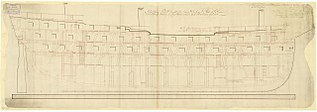 W
WThe Swiftsure-class ships of the line were a class of two 74-gun third rates, designed for the Royal Navy by Sir John Henslow.
 W
WThe Valiant-class ships of the line were a class of two 74-gun third rates of the Royal Navy.
 W
WThe Vanguard-class ships of the line were a class of two-deck 80-gun second rates, designed for the Royal Navy by Sir William Symonds, of which nine were completed as sailing ships of the line, although another two of these were completed as steam warships.
 W
WThe Vengeur-class ships of the line were a class of forty 74-gun third rates, designed for the Royal Navy as a joint effort between the Surveyors of the Navy at the time. The Vengeur Class, sometimes referred to as the Surveyors' class of third rates, amongst other names, was the most numerous class of ships of the line ever built for the Royal Navy - forty ships being completed to this design. Due to some dubious practices, primarily in the commercial dockyards used for construction, this class of ships earned itself the nickname of 'Forty Thieves.'
 W
WThe Worcester-class ships of the line were a class of three 64-gun third rates, designed for the Royal Navy by Sir Thomas Slade.